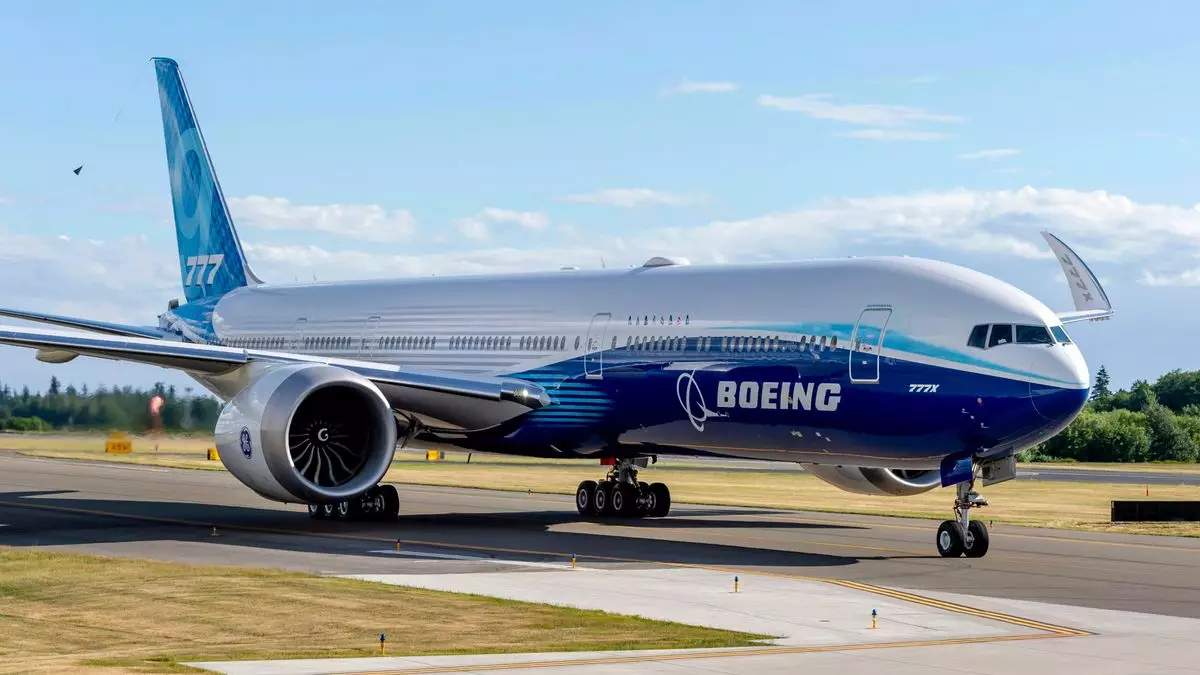After more than seven weeks of intense negotiations and labor unrest, factory workers at Boeing have officially voted to accept a new contract, bringing an end to their strike, which lasted 53 days. This resolution signals a fresh start for the aerospace giant’s production lines, particularly for its most popular airliner models. With an endorsement from 59% of the membership of the International Association of Machinists and Aerospace Workers (IAM), workers are now poised to return to their jobs, generating the much-needed cash inflow that Boeing has lost during this period of striking.
The contract achievement comes on the heels of Boeing’s fourth contractual offer, which marks a significant moment in labor relations for the company. Despite the acceptance of this offer, a notable aspect of the negotiations remains contentious: Boeing’s refusal to reinstate a pension plan that had been frozen nearly a decade ago. This critical issue has left some workers feeling unsatisfied despite the contract’s provisions.
The financial stakes associated with the strike were staggering. Analysts from Bank of America estimated that Boeing was losing upwards of $50 million each day the workers remained off the assembly lines. Many speculate that this loss had serious implications not just for the employees, but also for the trajectory of Boeing as a whole. The company’s other production facilities, particularly the nonunion plant in South Carolina which manufactures 787s, remained unaffected by the strike, demonstrating the concentrated impact of labor disputes in specific segments of the company.
The urgency to rectify the situation was underscored by Boeing CEO Kelly Ortberg’s communication with employees, in which he stressed the importance of unity in moving forward. His statements reflect an acknowledgment of the past difficulties, while also indicating a need for collaboration and rebuilding trust within the workforce. The path to restoring the integrity that has historically defined Boeing appears to hinge largely on how the company navigates these internal relationships.
The newly ratified contract entails a staggering 38% wage increase over four years, along with additional financial incentives such as productivity bonuses and a significant $12,000 ratification bonus. While the leadership of the IAM has characterized this contract as a hard-won victory, reactions from the union’s members themselves have been polarized. Many are celebrating the financial benefits, but others view the outcomes as a bitter concession in a broader fight for worker rights and union power.
Eep Bolaño, a member who voted in favor of the contract, encapsulated the mixed feelings shared among some union members. Despite acknowledging the decision as practical, she expressed her disappointment in the negotiation process, dubbing it “humiliating” that the union was unable to secure more from the company. On the other side of the spectrum, worker sentiments like those from William Gardiner, who positively viewed the contract as a step in the right direction, highlight the divergent perspectives within the workforce.
This labor dispute garnered considerable attention not only from Boeing stakeholders but also from political figures. President Joe Biden publicly commended the resolution of the strike, highlighting the importance of this agreement for workplace fairness and the employees’ ability to secure dignified retirement plans. Notably, his administration, particularly acting Labor Secretary Julie Su, intervened throughout the negotiation process, illustrating the intertwining of political interests with labor disputes in significant industries.
The implications of this agreement extend beyond the immediate relief it brings to the workers; it also holds promise for the larger aerospace sector in the U.S. With the government’s support, Boeing could stabilize its operations and avert further financial decline, presenting a pathway to regain market confidence.
Nonetheless, significant challenges remain. The history of Boeing’s labor relations has been marred by setbacks, and the recent strike follows a series of operational and reputational trials that have beset the company throughout the year. The scrutiny from federal regulators regarding safety issues is an ongoing concern, and there is a palpable need for the company to address these challenges effectively.
As production lines gear up for a restart, the question remains whether Boeing can mend the fractures within its workforce while simultaneously confronting external pressures. The collective aim for a better future hinges on leadership that reinforces a culture of respect, transparency, and collaboration. The union’s ability to balance immediate financial gains with strategic long-term objectives will define the evolution of labor relations at Boeing, and the continued support from both innovative and established political spheres will be important as various stakeholders move forward together on this path of recovery.


Leave a Reply